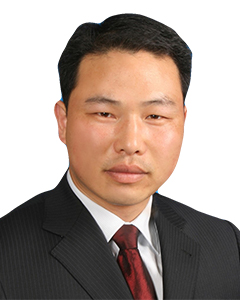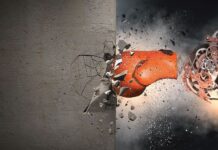The interpretation of claims plays an important role in patent litigation, often deciding whether a case is won or lost. Generally, the interpretation of claims usually refers to the interpretation of some terms in patent claims, and is performed by the adjudicator. In this process, the adjudicator needs to consider internal evidence and external evidence, and listen to the understanding of the patent applicant/patentee and other participants.

Patent attorney
Beijing Wanrui Law Firm
Internal evidence includes description, appended drawings and review files, while external evidence includes expert testimony, inventor testimony, technical dictionary, technical manual, reference books, textbooks, national or industrial technical standards, etc. If the statements of the inventor and agent are inconsistent with the internal evidence, how should the adjudicator judge?
Beijing Intellectual Property Court gave an answer in Jing 73 Xing Chu Case No.11078 (2018). The case involves an administrative dispute over invalidation of patent right. Claim 1 protects a laser particle sensor, which includes a beam of light. The controversial focus of the case is how to understand “a beam of light” in the patent claims, and in this regard, internal evidence and external evidence lead to contradictory conclusions.
As internal evidence, the description discloses that this beam is emitted by a collimated/focused laser source, but does not state that it should be a parallel beam. However, the patentee’s agent made other explanations in the invalidation procedure, and the invalidation decision of China National Intellectual Property Administration determined that the beam was a parallel beam. It is a well-known fact that the laser beam is gauss light beam, which is hyperbolic in appearance, and can be a focused or collimated beam.
For the conflict between internal evidence and external evidence, Beijing Intellectual Property Court adopted the principle of giving priority to internal evidence. The court first reiterated the provisions of paragraph 1 of article 59 of the Patent Law, that the scope of protection of the patent right shall be subject to the content of its claim, and the description and appended drawings can be used to explain the content of the claim.
Accordingly, the written description of claim 1 of this patent does not define the light beam as a parallel light beam, and the description of this patent only describes that the light source can be a collimated/focused laser. Combined with the conventional understanding of persons skilled in the art, the collimated/focused laser should not be understood as a parallel beam with “substantially the same properties at all positions”, as determined by the decision in question.
Even if the patentee advocates this understanding, the defendant should interpret specific concepts based on the general understanding of persons skilled in the art, and judge its novelty and creativity from the overall understanding of the technical scheme. On this basis, the court revoked the sued decision. The judgment provides beneficial enlightenment on the relationship between internal evidence and external evidence.
First, the principle of inquisitorial system requires the adjudicator to examine the patent ex officio, rather than relying on the statement of the parties
Patent examination adopts an inquisitorial system, and the statements of the parties are used to help examiners and judges understand the technical scheme. In accordance with the provisions of part 4 of the Patent Examination Guidelines, the principle of ex officio examination requires the Patent Re-examination Board to examine the cases ex officio, without being limited by the scope of the parties’ request, and the reasons and evidence put forward.
It is incorrect to substitute the independent judgment of the collegiate bench by citing the explanation of the patentee’s agent for the invalidation decision involved in the case, as it fails to correctly identify the facts and erroneously applies the law.
Second, internal evidence is more effective than the explanation of the parties
In patent examinations, the effect of internal evidence prevails over the statements of the parties and external evidence. Paragraph 1 of article 59 of the Patent Law provides: “The extent of protection of the patent right for invention or utility model shall be determined by the terms of the claims. The description and appended drawings may be used to interpret the claims.”
The judicial interpretation of the Supreme People’s Court has always insisted on giving priority to the internal evidence. Article 2 of the Provisions of the Supreme People’s Court on Several Issues Concerning the Application of Laws in the Trial of Administrative Cases of Patent Authorisation and Confirmation of Rights (I) provides that the people’s court shall define the terms of claims according to the usual understandings of persons skilled in the art, after their reading the patent claims, description and appended drawings.
Where the terms of claims are clearly defined or illustrated in the description and appended drawings, they shall be defined accordingly. Where any term cannot be defined in accordance with the provisions of the preceding paragraph, it may be defined based on the combination of the technical dictionaries, technical manuals, reference books, textbooks, and national or industrial technical standards commonly used by persons skilled in the art.
If persons skilled in the art can obtain a unique understanding by reading the published patent claims, description and appended drawings, the meanings of the relevant terms in the claims shall be determined according to the understanding. For example, article 4 of the above-mentioned provisions provides that if there are obvious errors or ambiguities in the grammar, characters, numbers, punctuation marks, figures and symbols in the patent claims, description and appended drawings, but persons skilled in the art can obtain a unique understanding by reading the patent claims, description and appended drawings, the people’s court shall make a determination according to the unique understanding.
Jiang Xianqi is a patent attorney at Beijing Wanrui Law Firm, a network firm of Sanyou Intellectual Property Agency

16/F, Block A, Corporate Square
No.35 Jinrong Street, Beijing 100033, China
Tel: +86 10 8809 1921 / 8809 1922
Fax: +86 10 8809 1920
E-mail: sanyou@sanyouip.com





















